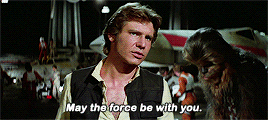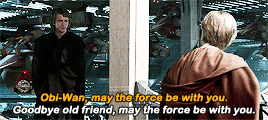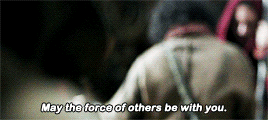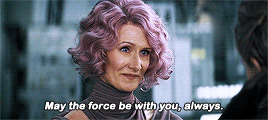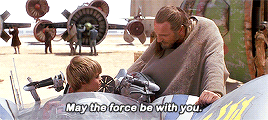dkrans
1K posts
everything, a little and so much more.
Don't wanna be here? Send us removal request.
Text
Why Won’t Our Parker Solar Probe Melt?
This summer, our Parker Solar Probe will launch to travel closer to the Sun than any mission before it, right into the Sun’s outer atmosphere, the corona.
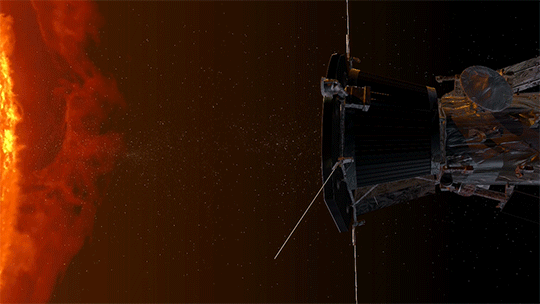
The environment in the corona is unimaginably hot: The spacecraft will travel through material with temperatures greater than 3 million degrees Fahrenheit.
So…why won’t it melt?
The Difference Between Heat and Temperature
Parker Solar Probe was designed from the ground up to keep its instruments safe and cool, but the nature of the corona itself also helps. The key lies in the difference between heat and temperature.
Temperature measures how fast particles are moving, while heat is the total amount of energy that they transfer. The corona is an incredibly thin and tenuous part of the Sun, and there are very few particles there to transfer energy – so while the particles are moving fast (high temperature), they don’t actually transfer much energy to the spacecraft (low heat).
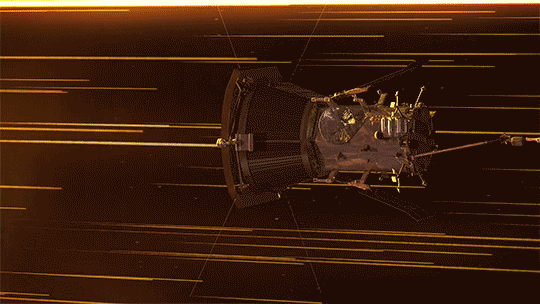
It’s like the difference between putting your hand in a hot oven versus putting it in a pot of boiling water (don’t try this at home!). In the air of the oven, your hand doesn’t get nearly as hot as it would in the much denser water of the boiling pot.
So even though Parker Solar Probe travels through a region with temperatures of several million degrees, the surface of its heat shield will reach only about 2,500 F.
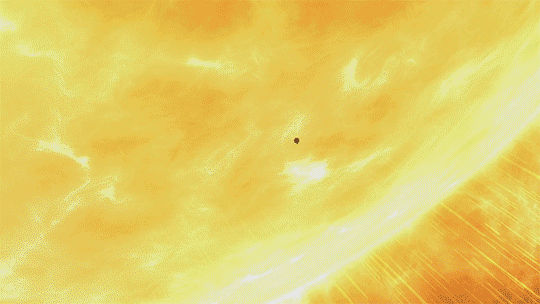
The Heat Shield
Of course, thousands of degrees Fahrenheit is still way too hot for scientific instruments. (For comparison, lava from volcano eruptions can be anywhere between 1,300 to 2,200 F.)
To withstand that heat, Parker Solar Probe is outfitted with a cutting-edge heat shield, called the Thermal Protection System. This heat shield is made of a carbon composite foam sandwiched between two carbon plates. The Sun-facing side is covered with a specially-developed white ceramic coating, applied as a plasma spray, to reflect as much heat as possible.

The heat shield is so good at its job that even though the Sun-facing side of the shield will be at 2,500 F, the instruments in its shadow will remain at a balmy 85 F.
Parker Solar Probe Keeps its Cool
Several other designs on the spacecraft help Parker Solar Probe beat the heat.
Parker Solar Probe is not only studying the Sun – it’s also powered by it. But even though most of the surface area of its solar arrays can be retracted behind the heat shield, even that small exposed segment would quickly make them overheat while at the Sun.
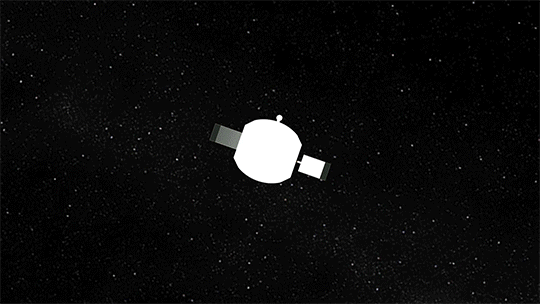
To keep things cool, Parker Solar Probe circulates a single gallon of water through its solar arrays. The water absorbs heat as it passes behind the arrays, then radiates that heat out into space as it flows into the spacecraft’s radiator.
It’s also important for Parker Solar Probe to be able to think on its feet, since it takes about eight minutes for information to travel between Earth and the Sun. If we had to control the spacecraft from Earth, by the time we knew something went wrong, it would be too late to fix it.
So Parker Solar Probe is smart: Along the edges of the heat shield’s shadow are seven sensors. If any of these sensors detect sunlight, they alert the central computer and the spacecraft can correct its position to keep the sensors – and the rest of the instruments – safely protected behind the heat shield.
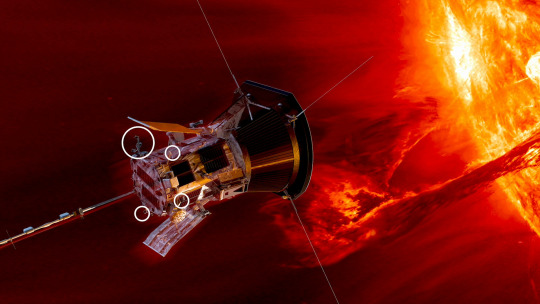
Over the course of its seven-year mission, Parker Solar Probe will make 24 orbits of our star. On each close approach to the Sun, it will sample the solar wind, study the Sun’s corona, and provide unprecedentedly close up observations from around our star – and armed with its slew of innovative technologies, we know it will keep its cool the whole time.
Parker Solar Probe launches summer 2018 on its mission to study the Sun. Keep up with the latest on the mission at nasa.gov/solarprobe or follow us on Twitter and Facebook.
Make sure to follow us on Tumblr for your regular dose of space: http://nasa.tumblr.com
6K notes
·
View notes
Photo



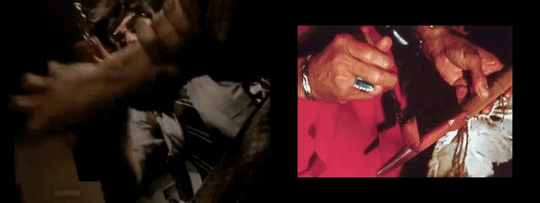
Alternative Neural Edit
Latest project from @mario-klingemann employs Neural Networks trained on a collection of archive footage to recreate videos using the dataset.
It is confirmed that no human intervention has occured in the processed output, and it is interesting where there are convincing connections between the two (and where there apparently are none):
Destiny Pictures, Alternative Neural Edit, Side by Side Version
youtube
This movie has been automatically collaged by an neural algorithm using the movie that Donald Trump’s gave as a present to Kim Jong Un as the template, replacing all scenes with visually similar scenes from public domain movies found in the internet archive.
Neural Remake of “Take On Me” by A-Ha
youtube
An AI automatically detects the scenes in the source video clip and then replaces them with similar looking archival footage. The process is fully automatic, there are no manual edits.
Neural Reinterpretation of “Sabotage” by the Beastie Boys
youtube
An AI automatically detects the scenes in the source video clip and then replaces them with similar looking archival footage.
There are other video examples at Mario’s YouTube page (but some may not be viewable due to music copyright.
If you follow Mario’s Twitter timeline, you can get updated with the latest examples, and follow the evolution of the project [link]
423 notes
·
View notes
Photo



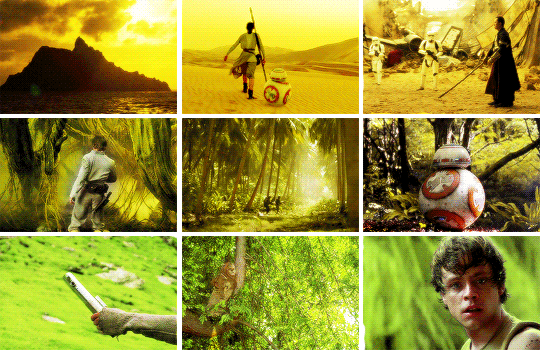
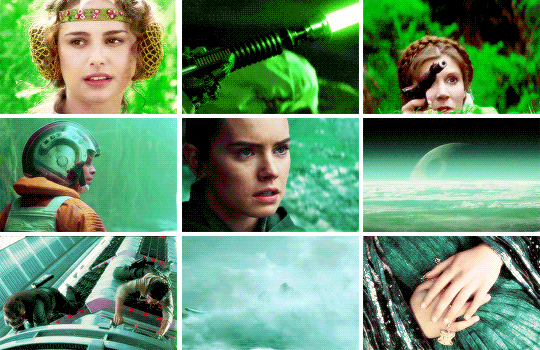


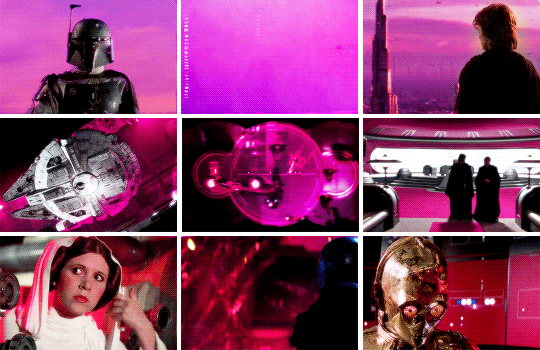


Remember, the Force will be with you… always.
Happy Star Wars Day!
37K notes
·
View notes
Photo


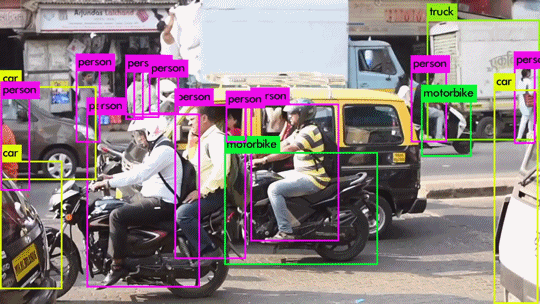

YOLO v3
New release of Object Recognition framework offers faster and improved realtime performance:
youtube
You only look once (YOLO) is a state-of-the-art, real-time object detection system. On a Pascal Titan X it processes images at 30 FPS and has a mAP of 57.9% on COCO test-dev.
… Prior detection systems repurpose classifiers or localizers to perform detection. They apply the model to an image at multiple locations and scales. High scoring regions of the image are considered detections.
We use a totally different approach. We apply a single neural network to the full image. This network divides the image into regions and predicts bounding boxes and probabilities for each region. These bounding boxes are weighted by the predicted probabilities.
Our model has several advantages over classifier-based systems. It looks at the whole image at test time so its predictions are informed by global context in the image. It also makes predictions with a single network evaluation unlike systems like R-CNN which require thousands for a single image. This makes it extremely fast, more than 1000x faster than R-CNN and 100x faster than Fast R-CNN.
More Here
390 notes
·
View notes
Text
10 outline techniques for writers
With this post I listed 10 outline techniques to help writes move their story from a basic idea to a complete set of arcs, plots, sequences and/or scenes. Or to simply expand whatever you have in hands right now.
If you have a vague story idea or a detailed one, this post is for you to both discover and organize. A few technique will work perfectly. A few won’t. Your mission is to find the one that works best for you. That said, I advice you to try out as many techniques as possible.
So, are you ready? Open your notebook, or your digital document, and let’s start.

1. Snowflake method: Start with a one-sentence description of the novel. Then, develop this simple phrase into a paragraph. Your next step is to write a one-page summary based on the paragraph, you can write about characters, motivations, goals, plots, options, whatever you feel like. From this point on, you can either start your book or expand the one-page summary into four pages. And, at last, four pages into a brief description of known sequences of scenes. Your goal is to make the story more and more complex as you add information, much like a forming snowflake.

2. Chapter by chapter: List ten to twenty chapters, give each chapter a tittle and a brief description of what should happen. Then, break each chapter into three to five basic sequences of scenes. Give each sequence a title, a brief description and a short list of possibilities (possibilities of dialogues, scenarios, outcomes, moods, feelings… just play around with possibilities). From this point on, you can either create the scenes of sequences with a one-sentence description for each or jump straight to writing. Your goal is to shift from the big picture to a detail-oriented point of view.
3. Script: This might sound crazy, but, with this technique, you will write the screenplay of your story as if it’s a movie. No strings attached to creative writing, just plain actions and dialogues with basic information. Writing a script will take time, maybe months, but it will also enlighten your project like no other technique. Your goal is to create a cinematic view of your story. How to write a script here.
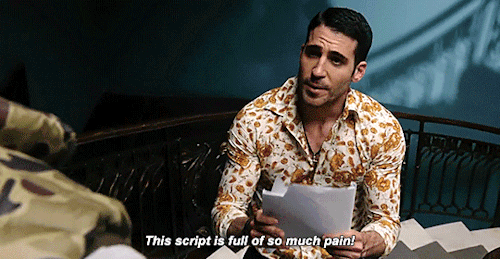
4. Free writing: No rules, no format, no step, just grab a pen or prepare your fingers to write down whatever idea that comes up. Think of possibilities, characters, places, quests, journeys, evolutions, symbolisms, fears, good moments, bad moments, clothing, appearances. Complete five to ten pages. Or even more. The more you write, the more you will unravel. You can even doodle, or paste images. Your mission is to explore freely.
5. Tag: This technique is ideal if you have just a vague idea of the story. Start by listing ten to fifteen tags related to the story. Under each tag, create possible plots. And, under each plot, create possible scenes. Grab a red felt pen and circle plots and scenes that sparkle your interest.
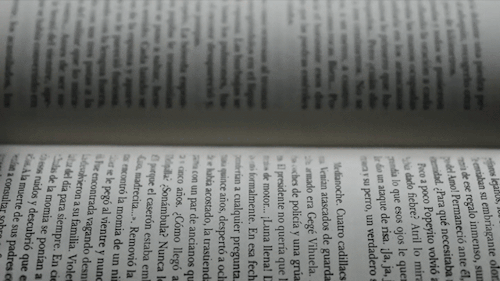
6. Eight-point arc: With this technique you will divide your story into eight stages. They are Stasis, Trigger, Quest, Surprise, Critical Choice, Climax, Reversal and Resolution. The Stasis is the every-day-life of your main character. Trigger is an event that will change the every-day-life of your character (for better or for worse). Quest is a period of your main characters trying to find a new balance, a new every-day-life (because we all love a good routine). Surprise will take your character away from their new found every-day-life. Critical Choice is a point of no return, a dilemma, your character will have to make the hardest decision out of two outcomes, both equally important. Climax is the critical choice put to practice. Reversal is the consequence of the climax, or how the characters evolved. Resolution is the return to a new (or old) every-day-life, a (maybe everlasting) balance.
7. Reverse: Write down a description of how your story ends, what happens to your characters and to those around them. Make it as detailed as possible. Then, move up to the climax, write a short scenario for the highest point of your story. From there, build all the way back to the beginning.
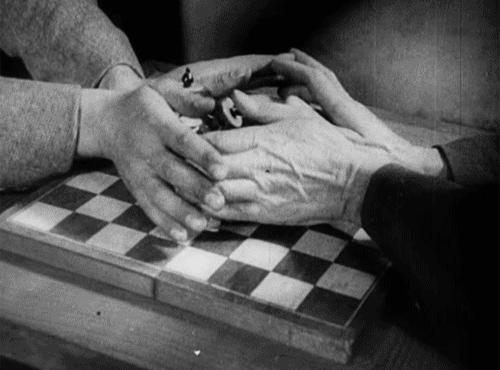
8. Zigzag: Draw a zigzag with as many up and downs as you want. Every up represents your main character moving closer to their goal. Every down represents your main character moving further from their goal. Fill in your zigzag with sequences that will take your character closer and farther from the goal.
9. Listing: The focus of this technique is exploring new ideas when your story feels empty, short or stagnated. You’ll, basically make lists. Make a long list of plot ideas. Make another list of places and settings. Make a list of elements. And a list of possible characters. Maybe a list of book titles. Or a list of interesting scenes. A list of bad things that could happen inside this universe. A list of good things. A list of symbolism. A list of visual inspiration. A list of absurd ideas you’ll probably never use. Then, gather all this material and circle the good items. Try to organize them into a timeline.

10. Character-driven: Create a character. Don’t worry about anything else. Just think of a character, their appearance and style. Give them a name. Give them a basic personality. Give them a backstory. Develop their personality based on the backstory. Now, give this character a story that mirrors their backstory (maybe a way to overcome the past, or to grow, or to revenge, or to restore). Based on your character’s personality, come up with a few scenes to drive their story from beginning to end. Now, do the same thing for the antagonist and secondary characters.
So, when is it time to stop outlining and start writing?
This is your call. Some writers need as many details as they can get, some need just an basic plot to use as a North. Just remember, an outline is not a strict format, you can and you will improvise along the way. The most important is being comfortable with your story, exploring new ideas, expanding old concepts and, maybe, changing your mind many times. There’s no right or wrong, just follow your intuition.
55K notes
·
View notes
Photo





Street Fighter II in the real world
Proof of concept experience by Abhishek Singh makes classic game Street Fighter II playable in the real world using iOS ARKit and Unity, and can be played via two iPhones:
youtube
Remember the classic arcade game Street Fighter 2? I rebuilt it as a multiplayer AR game to actually take it into the streets. I’m calling it the Real World Warrior edition.
Link
694 notes
·
View notes
Photo

Box-O-Dice’s 1000 Followers Dice Giveaway!
Please read before entering!
To celebrate finally reaching 1000 followers (And before my main blog did none the less) I am doing a Dice Giveaway!
WHAT YOU GET:
· The first place winner gets to pick a set of dice (15$ max, and within reason.)
· Second Place will get a random set that I selected from my local game shop.
· Third Place will be a Mixed set of dice that I put together.
RULES:
· You must be 18 or older.
· You must be following me
· Do not tag this as a giveaway
· No spam or Giveaway blogs.
· Reblogs and likes count as entries
· The Giveaway will end on Thursday April 5th
· The winners have 24 hours to respond to my message, with their information or new winners will be chosen.
I WILL SHIP ANYWHERE!
Feel Free to Message me with any questions!
3K notes
·
View notes
Text
Simple Rounding In JavaScript
Rounding is often done via 3rd party libraries and JavaScript due to the percieved difficulties of working with decimal numbers in JS. But there is actually a little known built-in function that does the equivalent:
const num = 9.567; console.log(num.toFixed(2)); // 9.57 console.log(num.toFixed(1)); // 9.6 console.log(num.toFixed(0)); // 10 console.log(num.toFixed()); // 10
It is named toFixed instead of round since the function is intended to transform a number to fixed point notation with a number of digits with the highest accuracy possible. It is called fixed point since there is a fixed number of digits after the dot (aka point).
This function can also be used in a more literal way to make numbers all follow a format:
function toMoney(number) { return number.toFixed(2); } const prices = [1, 2.4, 5.67, 3.33, 6.1]; // e.g. to display in a UI for (price of prices) { console.log(toMoney(price)); } // 1.00 // 2.40 // 5.67 // 3.33 // 6.10
Note this only supports up to 20 digits. More than that will require custom logic. Finally, this is an old feature that has been supported in all browsers for a very long time.
Github Location: https://github.com/Jacob-Friesen/obscurejs/blob/master/2018/rounding.js
106 notes
·
View notes
Photo

Yesterday something amazing happened 😊 We won the Mobile Site of the Year award @awwwards for Inside the Head 🎉 I'm so proud of what @sarajsvensson, @denisseaps, and I created together 💖 #awwwardsberlin (at Berlin, Germany)
0 notes
Photo



yGAN, fluid simulation, tiling. also, cats.
Video from Jason Salavon demonstrates his ongoing research in generating videos using neural networks with tiled images (such as cat faces) - the end effect is that of a dynamic mosaic:
vimeo
Jason also had a hand in the GenMo project which is a browser based version for single images, which you can try here
279 notes
·
View notes
Photo


Die With Me
Social Messaging app by Dries Depoorter and David Surprenant only lets you communicate when your smartphone battery is at 5%:
vimeo
The chat app you can only use when you have less than 5% battery.
Die together in a chatroom on your way to offline peace.
Official website can be found here
256 notes
·
View notes
Photo



Intel Studios Volumetric Video
Below is an example created with Intel Studios new production stage which can be used to film scenes from every angle:
youtube
Link
451 notes
·
View notes
Photo

The best thing that happened in 2017 is heavily represented in the #2017bestnine 🐶💖 Merry Xmas 🎄
0 notes
Photo





Malika Favre - http://malikafavreshop.bigcartel.com - https://twitter.com/malikafavre?lang=es - https://vimeo.com/malikafavre https://www.instagram.com/malikafavre/?hl=es - https://www.facebook.com/Malika-Favre-497644370271222
3K notes
·
View notes
Photo

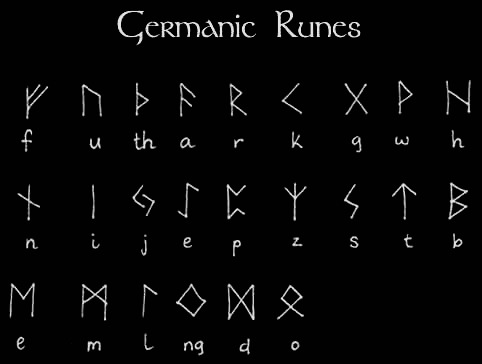

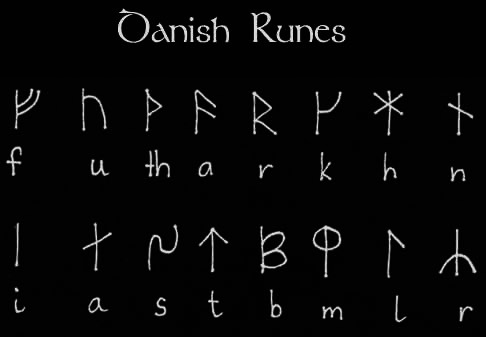
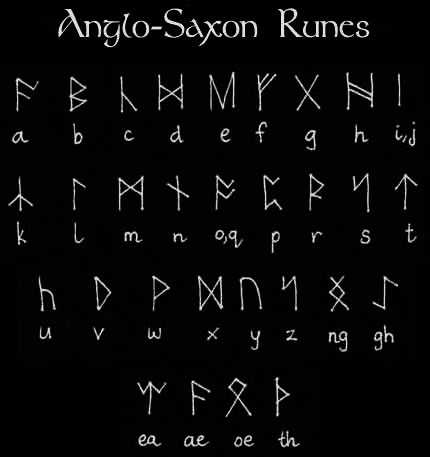





Ancient Alphabets. Thedan Script - used extensively by Gardnerian Witches Runic Alphabets - they served for divinatory and ritual purposes, as well as the more practical use; there are three main types of Runes; Germanic, Scandinavian/Norse, and Anglo-Saxon and they each have any number of variations, depending on the region from which they originate Celtic and Pictish - early Celts and their priests, the Druids, had their own form of alphabet known as “Ogam Bethluisnion”, which was an extremely simple alphabet used more for carving into wood and stone, than for general writing, while Pictish artwork was later adopted by the Celts, especially throughout Ireland Ceremonial Magick Alphabets - “Passing the River”, “Malachim” and “Celestial” alphabets were used almost exclusively by ceremonial magicians
223K notes
·
View notes


